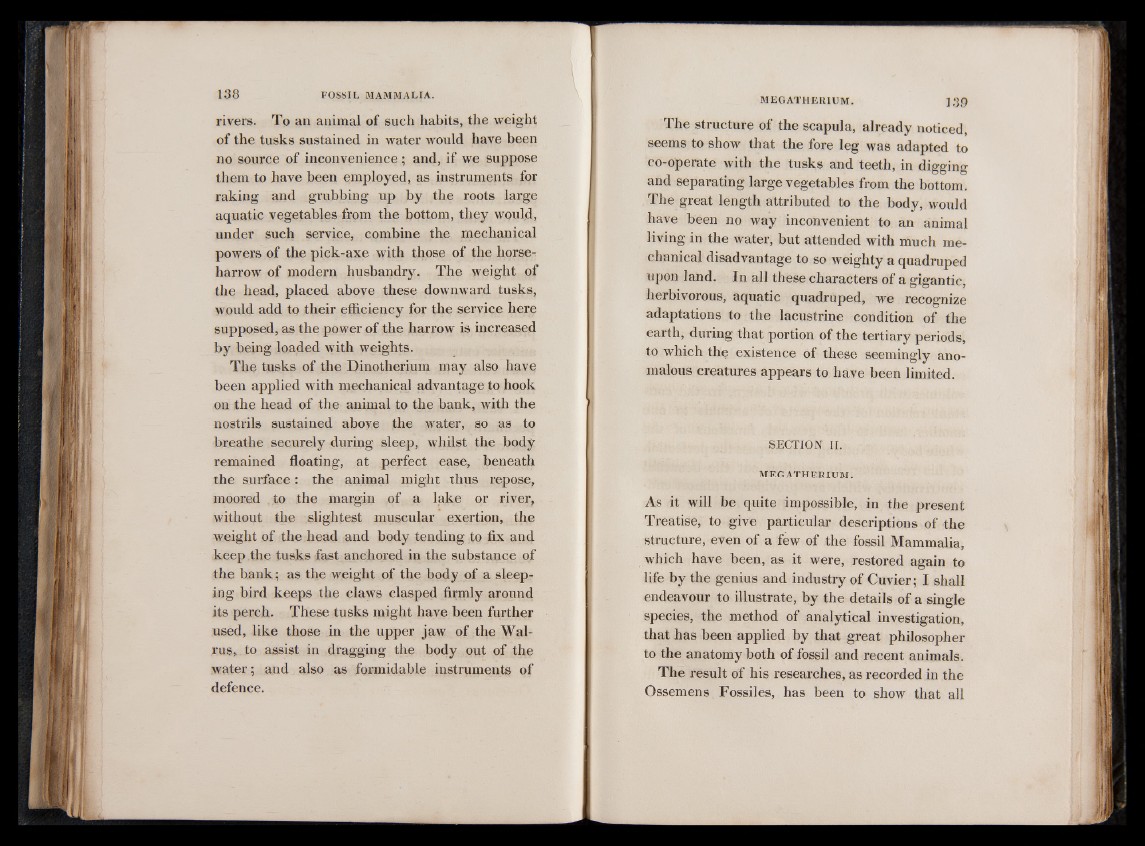
rivers. To an animal of such habits, the weight
of the tusks sustained in water would have been
no source of inconvenience ; and, if we suppose
them to have been employed, as instruments for
raking and grubbing up by the roots large
aquatic vegetables from the bottom, they would,
under such service, combine the mechanical
powers of the pick-axe with those of the horse-
harrow of modern husbandry. The weight of
the head, placed above these downward tusks,
would add to their efficiency for the service here
supposed, as the power of the harrow is increased
by being loaded with weights.
The tusks of the Dinotherium may also have
been applied with mechanical advantage to hook
on the head of the animal to the bank, with the
nostrils sustained above the water, so as to
breathe securely during sleep, whilst the body
remained floating, at perfect ease, beneath
the surface: the animal might thus repose,
moored to the margin of a lake or river,
without the slightest muscular exertion, the
weight of the head and body tending to fix and
keep the tusks fast anchored in the substance of
the hank; as the weight of the body of a sleeping
bird keeps the claws clasped firmly around
its perch. These tusks might have been further
used, like those in the upper jaw of the Walrus,
to assist in dragging the body out of the
water; and also as formidable instruments of
defence.
MEGATHERIUM. 139
The structure of the scapula, already noticed,
seems to show that the fore leg was adapted to
co-operate with the tusks and teeth, in digging
and separating large vegetables from the bottom.
The great length attributed to the body, would
have been no way inconvenient to an animal
living in the water, but attended with much mechanical
disadvantage to so weighty a quadruped
upon land. In all these characters of a gigantic,
herbivorous, aquatic quadruped, we recognize
adaptations to the lacustrine condition of the
earth, during that portion of the tertiary periods,
to which the existence of these seemingly anomalous
creatures appears to have been limited.
SECTION II.
MEGATHERIUM.
As it will be quite impossible, in the present
Treatise, to give particular descriptions of the
structure, even of a few of the fossil Mammalia,
which have been, as it were, restored again to
life by the genius and industry of Cuvier; I shall
endeavour to illustrate, by the details of a single
species, the method of analytical investigation,
that has been applied by that great philosopher
to the anatomy both of fossil and recent animals.
The result of his researches, as recorded in the
Ossemens Fossiles, has been to show that all